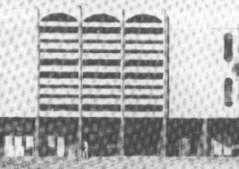

|



 Burundi
Burundi

|
Directory Information
|
Burundi, a republic in central eastern Africa, is
bordered by Rwanda on the north, Tanzania on the
east and south, Lake Tanganyika on the southwest,
and Zaire on the west. Population (1990) 5,356,000;
area 27,834 sq.km. The official languages are Kirundi
and French; Swahili is also widely spoken.
History
A kingdom since the 16th century,
Burundi was a Belgian colony called Urundi (often
associated with Ruarida) Until it gained its independence in 1962. A military coup overthrew the monarchy in 1966 and established a republic.
National Library
The national library and
archives are combined and located in Bujumbura, the
capital. They offer a wide range of services and
facilities for research, but they are not professionally
organized, nor are the collections properly housed,
because the institutions lack professional staff and
funds. They do have book and card catalogues oftheir
holdings and a reading room.
Academic Libraries
Major academic libraries
in Burundi are those of the University of Burundi
(150,000 volumes and 600 current periodicals), L11C
theological college of Bujumbura (15,000 volumes),
and the higher military institute 14,600 volumes). The
University of Burundi has a central library and several
departmental and institute libraries on the main campus in Bujumbura and one library at the Institute of Agriculture in Gitega. The central library is housed in a two-story building with seats for about 1,500
readers. The university libraries are designed to help
students and faculty conduct research on a wide range
of subjects. They also offer their services to the general
public for a small fee. The university libraries offer
library tours and bibliographic instruction to new
students at the beginning of each academic year.
Public Libraries
National cultural centers
were created in the provinces starting in 1989; by the
early 1990s, 10 of the 15 provinces had them. Their
holdings average 15,000 volumes of general-interest
books and small collections of audiovisual materials.
There are three major libraries open to the public in
Bujumbura: the American cultural center (4,000 volumes and 50 periodicals), the French cultural center
(21,000 volumes and 50 periodicals), and the United
Nations information center (almost 6,4 K) volumes and
more than 200 periodicals). They are used mostly by
high school students and civil servants.
School Libraries
Many secondary schools
throughout the country have school libraries. However, these libraries are not supported by the government, but by the local schools themselves. The quality and the number of their collections vary according to the budgets provided by local school boards.
Special Libraries
Most government mininistries maintain important technical and historical collections, including the National Center for Statistical Documentation in the Ministry of Planning, the
Library of Agronomic Sciences in the Ministry of
Agriculture, the library of the Department of Scientific Research in the Ministry of Education, and the
library of the Continuing Education Center in the
Ministry of public Administration. In many cases the
documents, though useful for research, are not well
used, because most libraies are not well organized and
few have professional staff.
The Profession
Librarianship is a new profession in Burundi. For many years, library services were
provided by nonprofessional staff. The first professional librarians, who had been trained in France and
Senegal, began working in the country in the 1980s.
The country now has about 20 librarians with professional degrees in library science. The Department of
Library Science at the University of Burundi offers a
two-year program for assistant librarians, evidence of
the government's commitment to develop and
strengthen librariansihip in the country.
Sources:



|